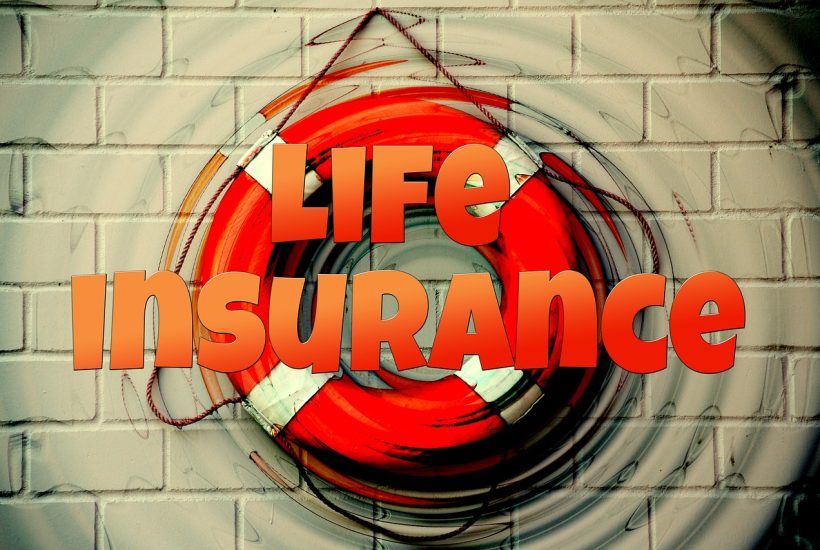Featured
Why I Like My Whole Life Policy
Whole Life Insurance has not, is not, and will not be considered an investment. However, after reviewing the reasons outlined above, the safety and benefits of having Whole Life can help me worry a lot less about my investments in tough years like 2022, preventing me from becoming the dreaded emotional investor. For full disclosure, I invest significantly more in real estate and equities each year than I pay in Whole Life premiums.

A few years ago I wrote a satirical article, one of the most circulated articles of my career, titled “Why Whole Life Insurance Stinks” (original article can be found here). I think it’s about time to revisit this age-old financial vehicle and its love-hate debate amongst financial gurus. Why now? Only time can truly stress test a financial plan, always providing new angles to evaluate decisions from. The world and the economy have changed dramatically in recent memory, but Whole Life Insurance has not.
Hundreds of billions of dollars of new premium flow into life insurance every year. In 2021, Whole Life premium grew 20% year-over-year and accounted for 35% of all individual retail life insurance, solidifying its place as the most popular form of life insurance (by premium total), ahead of Term, Universal, Indexed Universal, or Variable Universal Life Insurance. Let’s address some popular reasons why Whole Life Insurance still reigns supreme.
* Full disclosure, as the title suggests, I do own Whole Life, but to be fair, I also own most other assets a financial planner could address.
Reason #1- It helps me sleep at night
When an investor asks themselves where they can put their dollars, an analysis of risk and reward usually comes first. Whether it be the 401(k), Roth IRA, 529 College Savings Plan, or any brokerage account, the investor is faced with choices. Most data shows that aggressive equities yield the best long-term results. However, retail investors constantly struggle with staying the course long enough to realize such long-term results. Let’s look at 2022 Year-To-Date returns (data as of 10/20/20220)… The tech-heavy Nasdaq is down 33%, MSCI Emerging Markets is down 28%, the Russell 2000 representing small-cap is down 25%, and the S&P500 is down 23%. While the previous few years’ performances support the benefits of equities, 2022 supports the universal compliance disclaimer of, “Past performance does not guarantee future results.” Investors’ individual returns may be different than what is listed based on their selection of mutual funds, exchange-traded funds, or stocks, but they are certainly feeling the sting of today’s economy.
Investors wary of years like this one, often turn to bonds to make up their fixed-income component. Lower risk and lower reward might help them sleep at night. The mention of “bonds” and “fixed income” usually carries a connotation of safety for the investor. But, this form of interest-bearing debt carries its own risks. Default Risk is the risk of the issuing party defaulting on their debt repayments. Companies’ bonds are rated for risk by credit rating agencies ranging from the grade of “Junk”, also known as “High Yield”, up to “Investment Grade”. Investors looking for the safest of safe usually consider US Treasuries, backed by the “full faith and credit of the US government.” However, there is another fixed income risk in Interest Rate Risk. This arises when prevailing interest rates rise, which devalues existing bonds issued at previously lower rates. Here is where 2022 has taught a tough lesson for many. Due to the Fed raising interest rates at an alarming speed to combat inflation, the Bloomberg US Corporate Bond Index has fallen 20% YTD, strikingly close to the decline in the overall stock market.
Whole Life, while technically not an investment, offers two monetary values—Death Benefit and Cash Value. Both of these figures grow at a guaranteed interest rate plus potential dividends. When judged by the same parameters of fixed income, the purchaser may recall Default Risk and Interest Rate Risk. In terms of financial stability, the purchaser can choose from companies that have withstood the tests of time since the mid-1800s. Some of the top-rated carriers are Mutual companies, meaning they are 100% owned by their policyholders, there are no outside shareholders whose interests may conflict with the long-term benefits of policyholders. Lastly, life Insurance companies must abide by strict capital reserve requirements meant to handle unexpected financial events. In regard to Interest Rate Risk, insurers are constantly adding new assets to their multi-billion-dollar portfolios which reflect current interest rates, as a result, the best insurers’ dividends will often follow the movement of market interest rates, behaving similarly to 10-year US Treasury notes or Aa-rated bonds by Moody’s.
Reason #2- It helps my family sleep at night
While many pundits make the mistake of directly comparing investment portfolios to the returns of Cash Value, the purchaser must not forget that it is Whole Life Insurance. This means the foundation of the product is a Death Benefit, which so long as premiums are paid fully and on-time, is permanent and continually growing. Investors often build a portfolio with a goal in mind, and then use it differently as life happens. Whole Life’s death benefit offers the flexibility to be repurposed throughout the various phases of life. For the young professional, it may protect lost income to their family or business partners in the event of an unexpected death. For someone who already put the kids through college and paid off their mortgage, it might be an influx of capital to care for elderly parents facing high healthcare costs or to replace a breadwinner’s pension that was never fully realized. For the retiree, the death benefit can serve as a permission slip to spend other assets without disinheriting their spouse or disrupting any legacy plans, and without correlation to the stock market.
Reason #3- It can be an answer for Uncle Sam
Even when investment portfolios perform as hoped for, the IRS stands ready to collect taxes on everything from pre-tax retirement distributions to capital gains and interest income. Furthermore, Congress can change these tax rates, as they so often do as political winds change. Since Federal Income Tax was enacted in 1913, life insurance has received preferential tax treatment per its original use of providing for widows and children. Life insurance death benefit proceeds can be received by beneficiaries income-tax free, and cash values can grow tax-deferred and withdrawn by First In First Out accounting methods or loaned against. The US currently has over $30 trillion of debt, something to consider when tax planning for decades down the road.
Reason #4- It can be a self-completing plan in the event I become disabled
Whole Life can include disability protection. Losing one’s income due to illness or injury can be financially devastating to a family or business. Whole Life can include a disability waiver of premium in which the insurer continues to fund the policy on the disabled policyholder’s behalf. While individual disability income insurance is an ideal tool to replace lost earnings, it is often not enough for the investor to continue funding retirement and estate planning goals.
Reason #5- It can address the exorbitant costs of Long-Term Care
Long-term care has become the buzzword for Baby Boomers. As people are living longer, the costs of healthcare are routinely outpacing inflation. The nationwide median cost for a private room in a nursing home costs $9,034 per month. This can lead to a perfectly planned retirement or estate plan being depleted in the last years of life. Once again, life insurance death benefit proceeds can replenish these lost assets, or some Whole Life policies can include long-term care features that allow the insured to advance their Death Benefit while living to pay for such healthcare costs.
Reason #6- It is not Age 59 ½ Sensitive
As defined benefit pension plans have become less common, qualified defined contribution retirement plans have become the default option for most workers. Sometimes life does not go as planned, or conversely unforeseen opportunities arise, at which point 401(k)’s and IRA’s may appear to be in a lockbox. Such retirement plans stipulate that if accessed before Age 59 ½ (aside from certain IRS exceptions or loan provisions), the withdrawal may be subject to an additional 10% premature distribution tax penalty. While Whole Life cash values also grow tax-deferred, they are not qualified plans subject to IRS early withdrawal penalties.
Whole Life Insurance has not, is not, and will not be considered an investment. However, after reviewing the reasons outlined above, the safety and benefits of having Whole Life can help me worry a lot less about my investments in tough years like 2022, preventing me from becoming the dreaded emotional investor. For full disclosure, I invest significantly more in real estate and equities each year than I pay in Whole Life premiums, but each premium paid represents more of my disposable cash moving into a flexible and safe vehicle ready for the unexpected. That’s why I like my Whole Life policy.
__
(Featured image by geralt via Pixabay)
This article may include forward-looking statements. These forward-looking statements generally are identified by the words “believe,” “project,” “estimate,” “become,” “plan,” “will,” and similar expressions. These forward-looking statements involve known and unknown risks as well as uncertainties, including those discussed in the following cautionary statements and elsewhere in this article and on this site. Although the Company may believe that its expectations are based on reasonable assumptions, the actual results that the Company may achieve may differ materially from any forward-looking statements, which reflect the opinions of the management of the Company only as of the date hereof. Additionally, please make sure to read these important disclosures.

-

 Impact Investing2 weeks ago
Impact Investing2 weeks agoEU Eases CO2 Tax Burden on SMEs with Revised CBAM Rules
-

 Fintech2 days ago
Fintech2 days agoRobinhood Expands to Europe with Tokenized Stocks and Perpetual Futures
-

 Business1 week ago
Business1 week agoAmerica’s Debt Spiral: A $67 Trillion Reckoning Looms by 2035
-

 Crowdfunding6 days ago
Crowdfunding6 days agoTasty Life Raises €700,000 to Expand Pedol Brand and Launch Food-Tech Innovation
























